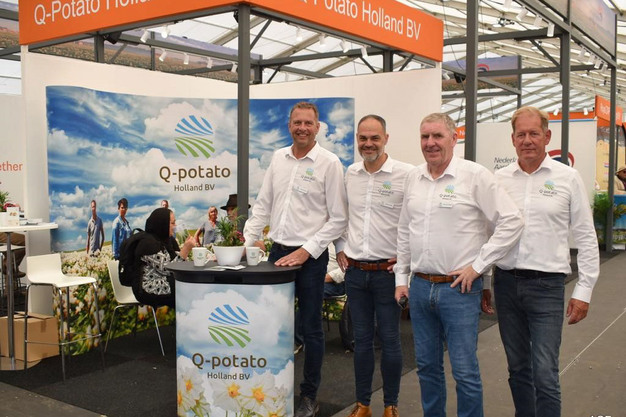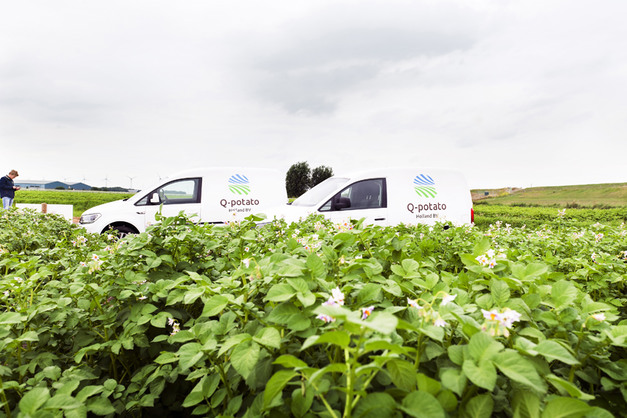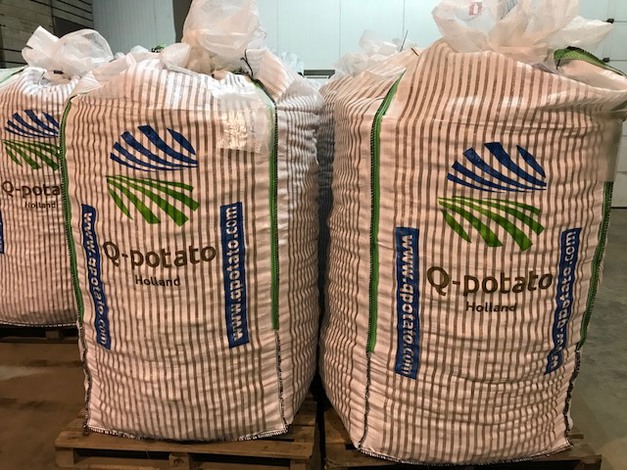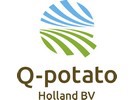Seed potato acreage is shrinking in the Netherlands, Germany, and France. In the Netherlands, this is the third consecutive decline; for the first time since 2014, that area is less than 40,000 hectares. That decrease makes ware potato cultivation challenging in the coming season. Also at play: increased disease pressure.
 Q-Potato Holland Team
Q-Potato Holland Team
Wouter Mutsaers, who buys and sells seed potatoes at Q-potato Holland, says with the means still available, controlling the growing disease pressure cropping up earlier in the season is increasingly difficult. That is one of the reasons many seed potatoes have been reduced or even rejected.
He adds that, besides the smaller acreage, poor tuber setting, large seed potatoes, and harvest problems due to heavy rain, have reduced starting material for next year. "It's been a generally dismal seed potato harvest, resulting in historically high prices. So, less acreage seems a strange market trend. Seed potatoes are very pricey, yet next season's acreage will be lower. Normally, acreage grows when prices are good," Wouter begins.
Break in the trend
The market should eventually become balanced again, and Wouter considers the lower seed potato acreage development a trend. "Something that really bucked that is last year's higher ware potato prices. That signaled many seed potato growers to partly switch crops." He does not rule out the possibility that the high seed potato prices will eventually attract growers again, allowing the acreage to rebound.
Wouter doubts that will happen soon, though. For the coming season, he assumes an approximately five percent shrinkage, pointing out that, along with good ware potato prices, things like labor dispersal may be why growers switch part of their seed potato crop to ware potatoes. "In summer, it's increasingly difficult to find personnel for seed potato selection," he says.
Post-checks
The class rejections and reductions - due partly to the presence of viruses and bacteria - that happened in seed potatoes last year are not encouraging, either, Mutsaers adds. "Besides value depreciation and seed potato growers possibly having less healthy starting material for the next season, it affects people emotionally, too. Growers give it their all all year to bring in good crops, only for post-checking to knock them back dramatically. That's not a good feeling. We were aware of that risk, but no one could've predicted it would be as big as it was last year."

Wouter, therefore, foresees a move toward using virus-resistant varieties. "That's one of the possibilities that's now on the shelf. The Dutch variety package doesn't yet contain many kinds of low-virus-vulnerable potatoes. But this issue will likely change that. Varieties not currently considered very commercially suitable will be prioritized and accepted because they're not that susceptible to viruses. Variety selection-wise, there will probably be more steering from cultivation and production rather than the demand side," he explains.
In own hands
Wouter foresees that, eventually, the tight seed potato market and high prices will make more Dutch free variety ware potato growers, like those in the seed potato export markets - especially North Africa, the Middle East, and Southern Europe - take control of their seed potato production. He wonders if that will succeed, especially in North Africa and the Middle East.
"Plenty of initiatives to grow their seed potatoes have already been unsuccessful. That's mainly due to the climate, the seed potatoes' health, and the lack of knowledge." Wouter also notes that where virus and aphid problems are already a factor of influence in the Netherlands, they have an even greater impact in North Africa and the Middle East.
Affect on ware potato acreage?
Wouter expects the disappointing seed potato harvest will lead to the increased processing of large sizes of these. It is too early to say if that will be enough. "That could partly solve the shortage, and growers can use ATR seed potatoes. But I dare not say how that will affect the ware potato acreage," he admits.

"That hot (seed) potato must still be passed on to ware potato growers. Acreage discussions highlighting the seed potato need only began in early January." Mutsaers does not consider it implausible that the lack of sufficient starting materials could result in decreased ware potato acreages in the coming season.
He points out that the roughly five percent lower seed potato acreage expected in the coming season will form the base for a tight market in the next season. Growing conditions, though, could also significantly affect that market. "A reasonable to good seed potato yield would negate some of that tightness," Wouter concludes.
Wouter Mutsaers
[email protected] Q-Potato Holland
Q-Potato Holland
Tel.: +31 (0)514 533 188
[email protected]
www.qpotato.com










